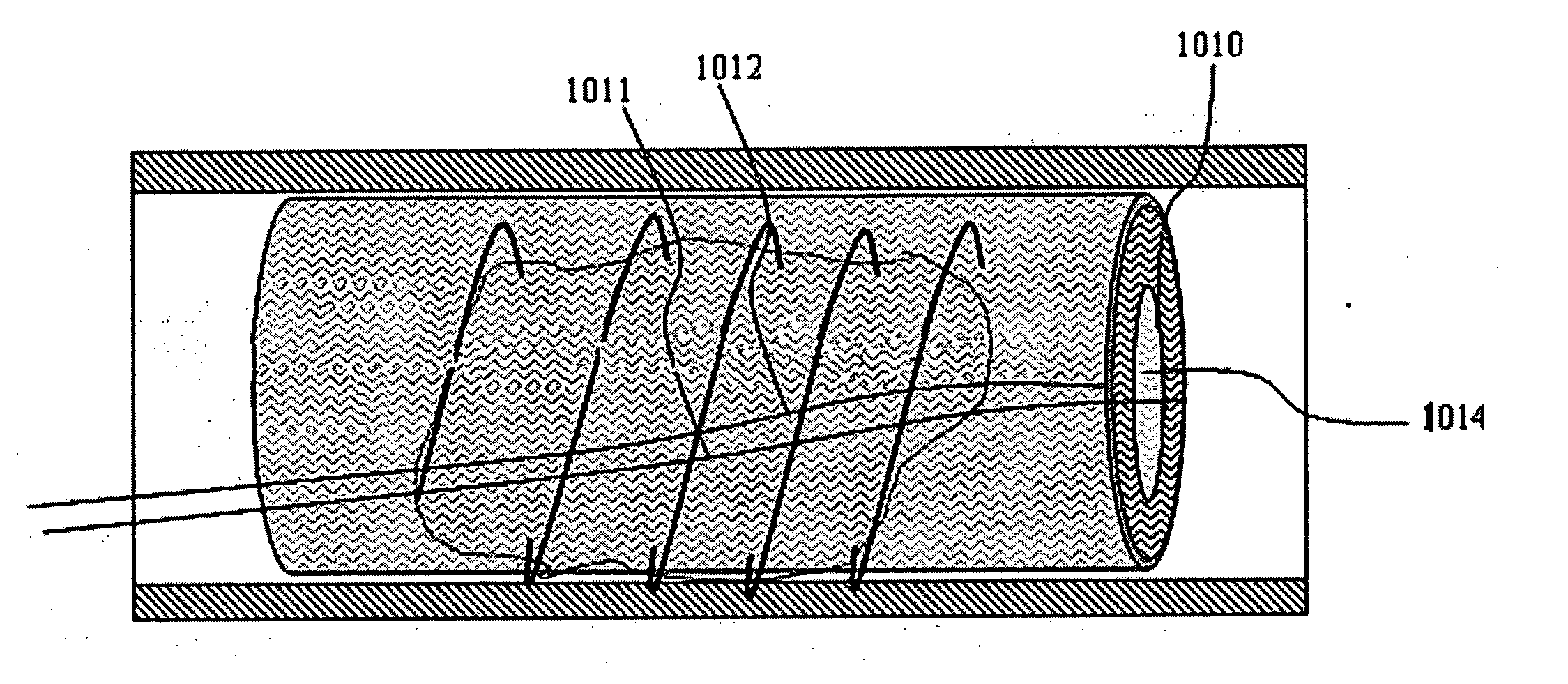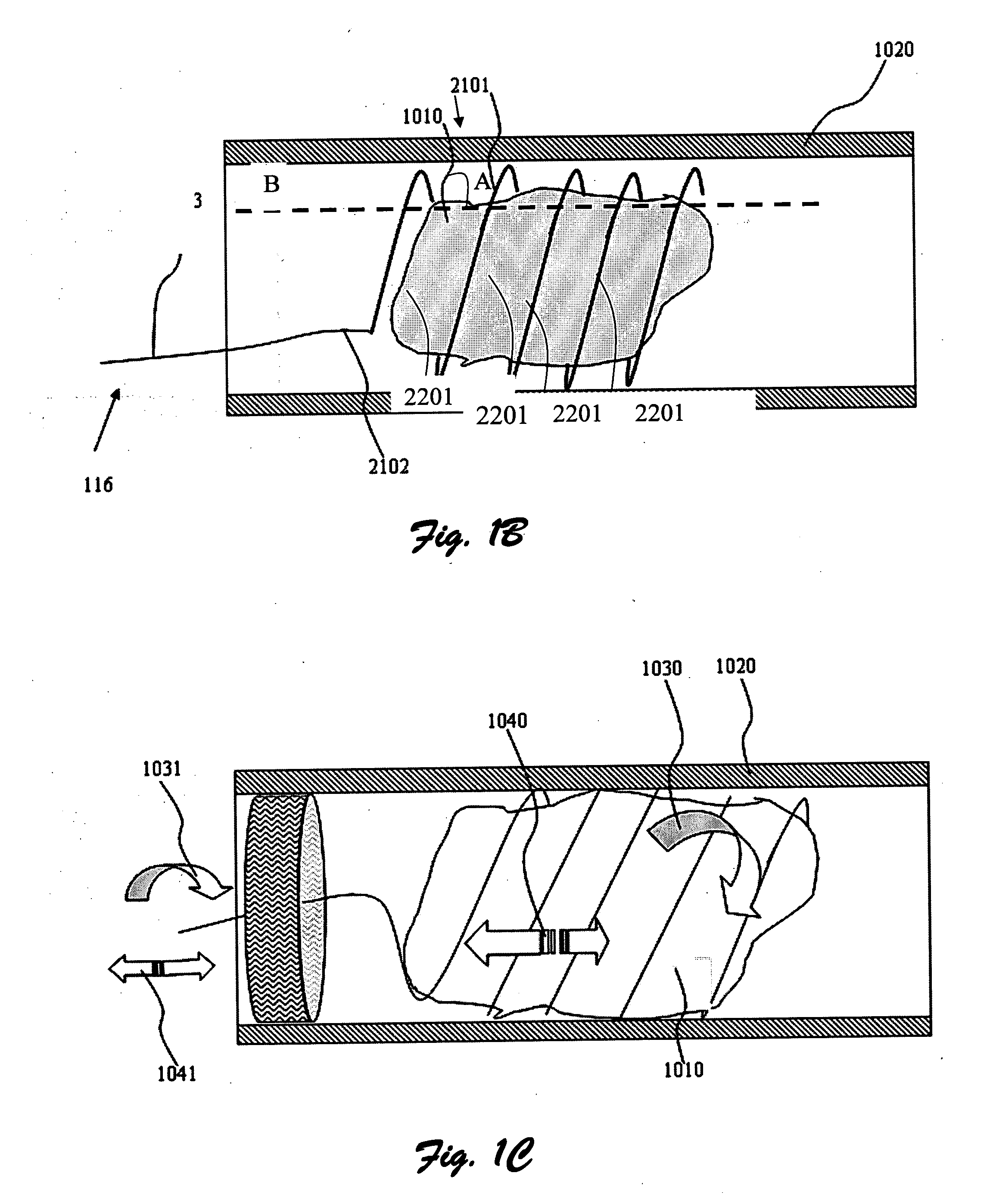Embolectomy device
a technology of clot removal and stent, which is applied in the field of minimally invasive or surgical devices, can solve the problems of severe disability or death, limited brain oxygen supply, ischemic stroke, etc., and achieve the effect of removing clots
- Summary
- Abstract
- Description
- Claims
- Application Information
AI Technical Summary
Benefits of technology
Problems solved by technology
Method used
Image
Examples
Embodiment Construction
[0168]The following description is provided, alongside all chapters of the present invention, to enable any person skilled in the art to make use of said invention and sets forth the best modes contemplated by the inventor of carrying out this invention. Various modifications, however, will remain apparent to those skilled in the art, since the generic principles of the present invention have been defined specifically to provide a minimally invasive implement that is designed to restore flow in human vasculature by extraction of clots from the same, even in distal, narrow neurovasculature.
[0169]The term “crossing” refers hereinafter to act of intersecting clot and penetrating its interior.
[0170]The term “about” refers hereinafter to a range of 25% below or above the referred value.
[0171]The term “non-fragmented manner” refers hereinafter to extraction of clots intact. i.e., the clot is removed as a whole without the danger of fragmenting within the vasculature.
[0172]The device of th...
PUM
 Login to View More
Login to View More Abstract
Description
Claims
Application Information
 Login to View More
Login to View More - R&D
- Intellectual Property
- Life Sciences
- Materials
- Tech Scout
- Unparalleled Data Quality
- Higher Quality Content
- 60% Fewer Hallucinations
Browse by: Latest US Patents, China's latest patents, Technical Efficacy Thesaurus, Application Domain, Technology Topic, Popular Technical Reports.
© 2025 PatSnap. All rights reserved.Legal|Privacy policy|Modern Slavery Act Transparency Statement|Sitemap|About US| Contact US: help@patsnap.com



